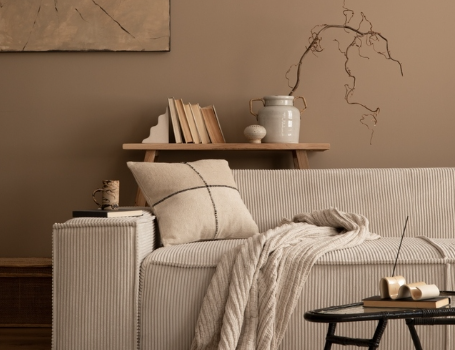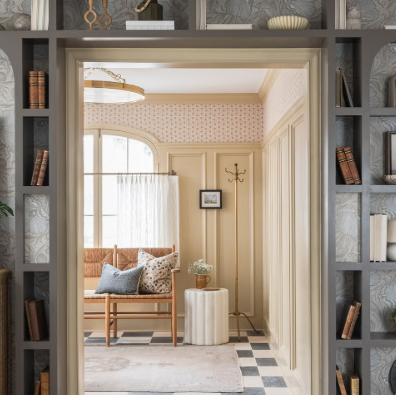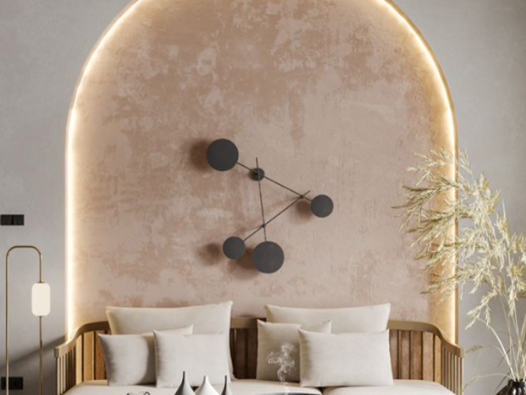
Interior design is more than just picking out furniture or choosing a color scheme. It’s about blending style with function to create spaces that are both visually appealing and practical. The 7 core principles of interior design offer a guide to help you transform any room into a harmonious and inviting environment. Whether you’re new to interior design or looking to refine your skills, understanding these principles will help you create a space that reflects your style while enhancing its functionality.
1. Balance: Creating Stability
Balance is a fundamental design principle that ensures a room feels stable and harmonious. It’s about evenly distributing visual weight throughout the space. There are three types of balance to consider:
- Symmetrical Balance: This is when elements are mirrored on either side of a central axis, creating a formal, traditional look.
- Asymmetrical Balance: This involves using different objects of equal visual weight to create a more dynamic, casual feel, often seen in modern spaces.
- Radial Balance: In this approach, elements radiate from a central point, such as a circular dining table with chairs around it.
2. Rhythm: Establishing Flow
Rhythm is about creating a sense of movement within a space. It helps guide the eye through the room, making it feel more organized and fluid. You can achieve rhythm using repetition, alternation, and progression:
- Repetition: Repeating colors, textures, or patterns to create consistency.
- Alternation: Alternating elements like light and dark shades or patterns to create variation.
- Progression: Gradually changing the size, color, or pattern of elements to lead the eye from one area to another.
3. Harmony: Creating a Unified Look
Harmony ensures that every element in a space works together cohesively. A unified theme, color palette, or material choice helps achieve this. For example, using neutral tones throughout your home can create a sense of unity while still allowing each room to maintain its own character.
4. Proportion and Scale: Sizing Matters
Proportion and scale are about the relationship between objects and their surroundings. When objects are in proportion, they feel balanced in relation to each other and the space as a whole:
- Proportion: Refers to how furniture and decor relate to each other. For instance, a large sectional sofa in a small room might overwhelm the space.
- Scale: Deals with the overall size of objects in relation to the room. Large rooms or high ceilings might call for bigger furniture or larger artwork to balance the space.
5. Emphasis: Creating a Focal Point
Every room benefits from a focal point that draws attention and anchors the design. This could be a striking piece of furniture, a bold piece of art, or an architectural feature like a fireplace. Use lighting, color, or placement to highlight the focal point and make it stand out, drawing the eye naturally to it.
6. Contrast: Adding Depth and Interest
Contrast is what keeps a space from feeling flat or monotonous. By pairing contrasting elements, you can create visual excitement and depth:
- Color: Pairing opposing colors, like black and white, creates dramatic contrast.
- Texture: Mixing smooth surfaces with softer textures, like leather and fabric, adds richness.
- Shape: Combining geometric shapes with more organic, curved forms adds visual complexity.
7. Functionality: The Foundation of Design
While aesthetics are important, the functionality of a space is paramount. A well-designed room must be both beautiful and practical for daily use. Consider how people will move through the space, how much storage is needed, and how lighting will support different activities.
- Furniture Layout: Ensure that furniture allows easy movement and access to key features.
- Storage: Integrate functional storage solutions to keep the room clutter-free.
- Lighting: Use a mix of ambient, task, and accent lighting to create a well-lit, practical space.
How to Implement the 7 Principles in Your Home
Understanding the principles is the first step, but applying them effectively is where the real transformation happens. Here are some tips for integrating these principles into your home:
- Start with a Focal Point: Identify one key feature to highlight, whether it’s a piece of artwork or a fireplace.
- Balance the Layout: Distribute furniture and decor evenly, keeping in mind the space’s proportion and flow.
- Choose a Cohesive Palette: Select colors and materials that work well together and create a unified feel.
- Create Rhythm with Patterns: Use repeating elements like textiles or colors to establish flow.
- Use Contrast: Add interest by combining different textures, colors, and shapes.
- Ensure Functionality: Design with purpose—consider how the space will be used and make sure it meets your practical needs.
Why Understanding Interior Design Principles is Important
Interior design theory gives you the framework to understand why certain design choices work. Mastering these principles helps you approach each design project with intention, whether you’re updating a single room or redesigning an entire home. These principles provide structure, but there’s room to adapt and personalize them to suit your unique style.
Conclusion
The 7 principles of interior design are essential tools for creating beautiful, functional spaces. They offer guidance on achieving balance, harmony, and visual interest, ensuring your space feels cohesive and welcoming. By applying these principles, you can confidently tackle any design challenge and transform your home into a space that reflects your personality and lifestyle. Whether you’re working on a single room or a complete home makeover, these timeless principles will help you create a space that’s both stylish and livable.










